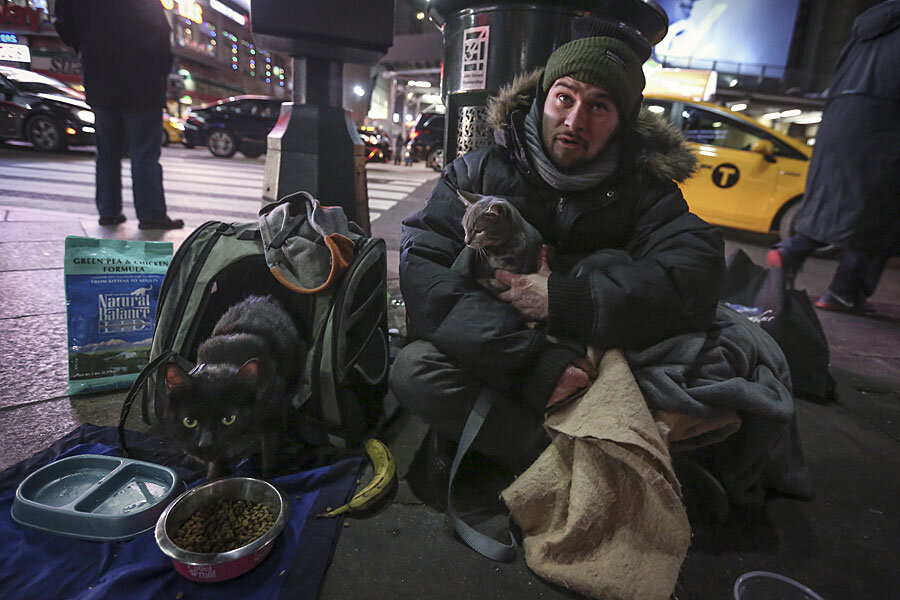New York mayor sets sights on decrepit homeless shelter system
Loading...
As winter temperatures drop, New York City's homelessness crisis has once again taken on a new level of urgency. Acknowledging the poor shelter conditions and high volume of people living on the streets, Mayor Bill de Blasio has a plan to overhaul the city’s overburdened shelter system.
"For decades, our shelters have not been safe enough or clean enough, and that's just not acceptable," Mr. de Blasio said in a statement. "I don't want anyone refusing to come into a homeless shelter because of bad conditions."
He announced the details of the comprehensive plan Wednesday, just a day after his appointment of a new deputy mayor for health and human services, Herminia Palacio, who will be in charge of the city’s Department of Homeless Services. One of her first tasks is to gradually get rid of the dilapidated “cluster site” shelters for homeless families.
As part of the Shelter Repair Squad 2.0 mission, the city will first increase the number of shelter inspections and issuing a complaint hotline for shelter guests to report crumbling conditions. After problems are identified, a rapid response repair team will be called to prompt action, and finished repairs will be continually monitored.
“Too often now we fix problems only to see them reoccur and new ones develop because there hasn’t been capital investment to fix the underlying issues. So while we make immediate repairs, we will also develop a plan to upgrade shelter buildings to reduce these problems in the future,” Human Resources Administration Commissioner Steven Banks said in the statement. “Fixing buildings will be much less expensive in the long run than constantly repairing them.”
New York’s shelters currently house about 58,000 people, a near-record high number. Between 3,000 to 4,000 additional people are estimated to be living on city streets.
Gov. Andrew Cuomo on Sunday issued an executive order requiring communities to bring all people who are homeless indoors, something that de Blasio says New York City officials already attempt to do.
As the weather dipped below 32 degrees this week, City Hall has increased efforts in reaching out to the homeless to advise them to go into the city’s 500-shelter system. But many of those living outside choose to do so because shelters are not only often in poor shape but also a breeding ground for criminal activity.
“Shelters out here are not shelters – they’re sometimes worse than the streets,” Jeremiah Murphy, who has been in and out of shelters, told The Christian Science Monitor Monday. “A lot of people don’t want to go to the shelter because they’ve got to worry about people stealing your stuff. People have knives and guns and stuff – and I’m supposed to feel some sort of safe haven?”
In a letter addressing City Hall, Comptroller Scott Stringer details the 18,000 health or safety violations that were discovered by an audit of the shelter system. The violations include vermin infestation, broken smoke detectors, and peeling lead paint
The initial Shelter Repair Squad has been able to remedy 12,000 violations in the structures since May. The new repair program is part of a 90-day review of the Department of Homeless Services ordered by the mayor last month.
This report contains material from the Associated Press.






